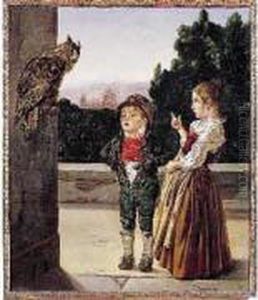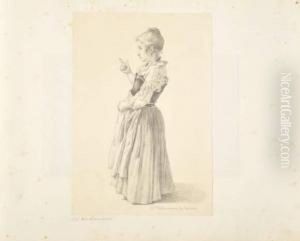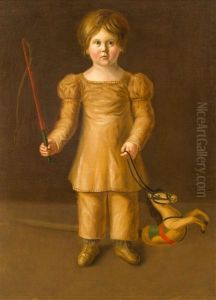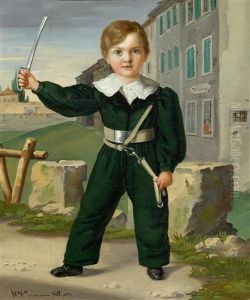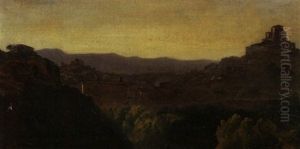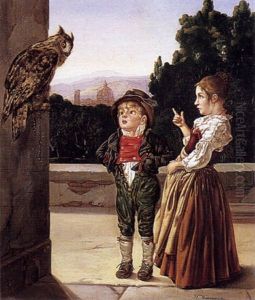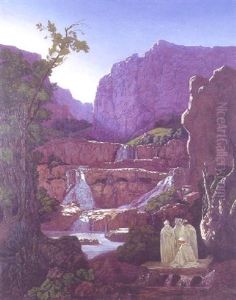Johann Caspar Weidenmann Paintings
Johann Caspar Weidenmann was a Swiss artist and architect known primarily for his contributions in the realms of painting, engraving, and architecture during the late 18th and early 19th centuries. Born on December 2, 1771, in Winterthur, Switzerland, Weidenmann showed an early interest in the arts, which was nurtured through his education and subsequent professional training.
Initially, Weidenmann trained under his father, who was also an artist, before moving on to further his studies. He was later influenced by the neoclassical movement, which was prevalent at the time, and this influence is evident in his architectural works. As an architect, Weidenmann contributed to the design and construction of various buildings, which often included classical elements such as symmetry, proportion, and the use of columns.
In addition to architecture, Weidenmann was also involved in painting and engraving. His engravings, in particular, garnered attention for their intricate details and craftsmanship. These works often featured landscapes, portraits, and scenes from everyday life, reflecting the artist's keen observation skills and his ability to capture the essence of his subjects. His artistry was appreciated for its precision and the delicate handling of light and shadow, which added depth and realism to his compositions.
Throughout his career, Weidenmann remained active in the Swiss art community, contributing to the cultural landscape of his time. His works were exhibited in various venues, and he was respected by his contemporaries for his artistic abilities and his contributions to the field of architecture.
Johann Caspar Weidenmann passed away on August 11, 1837, in Winterthur. Although he may not be as widely recognized as some of his contemporaries today, his work remains a testament to the artistic and architectural heritage of Switzerland during a period marked by a transition from traditional to more modern sensibilities. His legacy is preserved in the buildings he helped design and the artworks he created, which continue to be of interest to historians and art enthusiasts alike.
